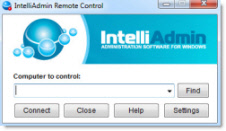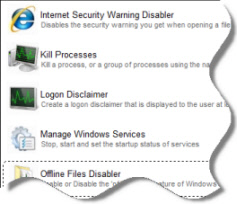LAN access drops when Internet access drops
My internet connection drops intermittently, but so far, 99% correlation with poor weather, so I've been blaming that on the ISP and the weather. It comes back in a while.
So my computers are all connected to via a Netgear Gigabit ethernet switch to a Cisco Gigabit ethernet router, which also handles my network printers and VoIP modem, and the ISP is Frontier DSL. After some horrors with a Vista laptop from HP, I returned
it, and stayed happily on XP for several more years, but eventually was enticed to a new 64-bit machine, so am now running Win7 64-bit.
This business of automatically detecting private versus public networks is weird, but I can see it could have a benefit for stupid users... the question forces them to think about where they are and what they are doing. But this desktop machine never
leaves my private network, and so it really doesn't need the overhead of doing that detection.... is there a way to configure the detection to be off? And to configure the computer permanently attached to a private, secure LAN?
Further, I think it is the cause of my problem: when the Internet access drops, Windows then doesn't know what connection it is connected to, and reverts to an untrusted configuration, blocking the connections to the other machines on my LAN. This
is the ultimate in stupidity. I'm not sure what algorithms are used to detect the network, but the LAN is connected via the same router when the internet is up and when the internet is down. It seems reasonable that the detection algorithm would
use the MAC address of the gateway device to determine the network, but apparently it uses something else, or something more, or ????
Anyway, please tell me how to retain access to my LAN when my internet connection goes away.
May 18th, 2011 12:00am
Disgusted Win7User wrote:
My internet connection drops intermittently, but so far, 99%
correlation with poor weather, so I've been blaming that on the ISP
and the weather. It comes back in a while.
So my computers are all connected to via a Netgear Gigabit ethernet
switch to a Cisco Gigabit ethernet router, which also handles my
network printers and VoIP modem, and the ISP is Frontier DSL. After
some horrors with a Vista laptop from HP, I returned it, and stayed
happily on XP for several more years, but eventually was enticed to a
new 64-bit machine, so am now running Win7 64-bit.
This business of automatically detecting private versus public
networks is weird, but I can see it could have a benefit for stupid
users... the question forces them to think about where they are and
what they are doing. But this desktop machine never leaves my
private network, and so it really doesn't need the overhead of doing
that detection.... is there a way to configure the detection to be
off? And to configure the computer permanently attached to a
private, secure LAN?
Further, I think it is the cause of my problem: when the Internet
access drops, Windows then doesn't know what connection it is
connected to, and reverts to an untrusted configuration, blocking the
connections to the other machines on my LAN. This is the ultimate in
stupidity. I'm not sure what algorithms are used to detect the
network, but the LAN is connected via the same router when the
internet is up and when the internet is down. It seems reasonable
that the detection algorithm would use the MAC address of the gateway
device to determine the network, but apparently it uses something
else, or something more, or ????
Anyway, please tell me how to retain access to my LAN when my
internet connection goes away.
Probably your PCs get their IP-settings from your
Internet-Gateway(Router) and have the name-servers pointed to some
servers in the internet. Thus everytime your Internet-Gateway has a
problem you loose DNS connectivity and maybe some other settings
change, too. If you have a reliability problem with your internet
access you need to configure your local network in such a way, that it
does not depend on an available internet-connetion. That means in
particular, that you setup a local DNS-server (I am pretty sure your
Cisco router can handle that, if configured appropriately) and
configure your PCs (via DHCP) to use this name-server as primary
name-server. Then you should configure a local DHCP server, which hands
out local non-internet-routable IP-addresses to your PCs, so the whole
network does not depend on the internet connection for local
connectivity.
Then the availablity of the internet connection will not change network
characteristics for Win7.
HTH
Wolfgang
Free Windows Admin Tool Kit Click here and download it now
May 18th, 2011 1:06pm
Indeed my name servers point to the internet. I have a Cisco RVS4000AG router... Searching through the documentation on the CD, I find no suggestion of configuring the router to act as a DNS server; nor can I find such a capability to configure a DNS
server in the router, other than being able to configure the one it should use on the WAN side (but it gets one from DHCP, so that is blank).
I have Windows 7 Professional on one machine, and XP Home or XP Professional on all the rest. As far as I am aware, these versions of Windows do not have DNS server capabilities. If they do, particularly the Win7 since it is the machine that
loses its LAN brains when the WAN dies, please inform me where to find such documentation on how to configure it.
If Win 7 Professional is dependent on a local DNS server to properly function (which is seems to be, since it loses access to the LAN when the WAN DNS is gone, according to the reply above), then it should have built in DNS server functionality so that a
LAN can be appropriately configured. If it does not have DNS server functionality, then it should be coded so that it doesn't lose its LAN access when the WAN disappears.
I'm getting the idea that Win 7 Professional has a serious deficiency in this area. In my mind, basing the decision about whether the LAN is public or private should be made solely on data available on the LAN, not data that must be obtained from the
WAN. If the WAN is available, fine, but that should be irrelevant to the LAN access mode.
It seems that the MAC address of the DHCP server could be used to discriminate among LANs. It seems that a requirement to access a WAN resource to discriminate among LANs is inappropriate.
I disagree that the response by Wolfgang should be marked as an answer, because if it is an answer, it is incomplete or incorrect (as far as I can tell after much additional research, neither my router nor my Windows machines have the capability to act as
a LAN-local DNS server). Further, if such an incomplete or incorrect answer does accurately reflect the state of affairs, then Win7 Professional has a serious deficiency which should be addressed, and the response doesn't reflect that.
June 27th, 2011 2:25am
Disgusted Win7User wrote:
Indeed my name servers point to the internet. I have a Cisco
RVS4000AG router... Searching through the documentation on the CD, I
find no suggestion of configuring the router to act as a DNS server;
nor can I find such a capability to configure a DNS server in the
router, other than being able to configure the one it should use on
the WAN side (but it gets one from DHCP, so that is blank).
I have Windows 7 Professional on one machine, and XP Home or XP
Professional on all the rest. As far as I am aware, these versions
of Windows do not have DNS server capabilities. If they do,
particularly the Win7 since it is the machine that loses its LAN
brains when the WAN dies, please inform me where to find such
documentation on how to configure it.
If Win 7 Professional is dependent on a local DNS server to properly
function (which is seems to be, since it loses access to the LAN when
the WAN DNS is gone, according to the reply above), then it should
have built in DNS server functionality so that a LAN can be
appropriately configured. If it does not have DNS server
functionality, then it should be coded so that it doesn't lose its
LAN access when the WAN disappears.
I'm getting the idea that Win 7 Professional has a serious deficiency
in this area. In my mind, basing the decision about whether the LAN
is public or private should be made solely on data available on the
LAN, not data that must be obtained from the WAN. If the WAN is
available, fine, but that should be irrelevant to the LAN access mode.
It seems that the MAC address of the DHCP server could be used to
discriminate among LANs. It seems that a requirement to access a WAN
resource to discriminate among LANs is inappropriate.
I disagree that the response by Wolfgang should be marked as an
answer, because if it is an answer, it is incomplete or incorrect (as
far as I can tell after much additional research, neither my router
nor my Windows machines have the capability to act as a LAN-local DNS
server). Further, if such an incomplete or incorrect answer does
accurately reflect the state of affairs, then Win7 Professional has a
serious deficiency which should be addressed, and the response
doesn't reflect that.
Okay, these ex-Linksys routers don't have the features of the full
blown Cisco routers. But your problem seems to be, that your settings
are dependent on DHCP settings received by your router, which gets
these from your ISP. So you should get rid of those settings regardless
of your ISP settings by e.g. expressly setting a DNS server via DHCP
and setting the default route expressly. Your router can act as DHCP
server for the LAN and sets it's LAN address as default route and does
accept any specific entry for DNS server addresses it hands out via
DHCP.
If you do this you loose depedency on WAN connectivity for the settings
of the router's DHCP server - but of course you have no local name
resolution as long as you are disconnected from the internet. For that
to work you could use a hosts-file
(%Windir%\system32\drivers\etc\hosts).
Of course you could edit the setting for public networks to be the same
as the settings for workgroup networks (in advanced sharing and in
windows firewall) so you have no problems if you are connected to an
unknown (public) network.
No need to rant on Windows if you don't like it. You are free to use
another OS e.g. a Linux distro - and with virtualization you can run
quite a bunch of different OSs on one real box.
Wolfgang
Free Windows Admin Tool Kit Click here and download it now
June 27th, 2011 3:25pm
Okay, these ex-Linksys routers don't have the features of the full
blown Cisco routers. But your problem seems to be, that your settings
are dependent on DHCP settings received by your router, which gets
these from your ISP. So you should get rid of those settings regardless
of your ISP settings by e.g. expressly setting a DNS server via DHCP
and setting the default route expressly. Your router can act as DHCP
server for the LAN and sets it's LAN address as default route and does
accept any specific entry for DNS server addresses it hands out via
DHCP.
If you do this you loose depedency on WAN connectivity for the settings
of the router's DHCP server - but of course you have no local name
resolution as long as you are disconnected from the internet. For that
to work you could use a hosts-file
(%Windir%\system32\drivers\etc\hosts).
Of course you could edit the setting for public networks to be the same
as the settings for workgroup networks (in advanced sharing and in
windows firewall) so you have no problems if you are connected to an
unknown (public) network.
No need to rant on Windows if you don't like it. You are free to use
another OS e.g. a Linux distro - and with virtualization you can run
quite a bunch of different OSs on one real box.
Wolfgang
OK, I see where I can set DHCP settings for the LAN side:
Server Settings (DHCP)
DHCP Server:
<input name="lan_dhcp" type="radio" value="enable" />Enable <input name="lan_dhcp" type="radio" value="disable" />Disable <input name="lan_dhcp" type="radio" value="relay" />DHCP Relay
DHCP Server:
<input class="ipnum" disabled="disabled" maxlength="3" name="dhcpserver_ip_1" size="3" type="text" /> . <input class="ipnum" disabled="disabled" maxlength="3" name="dhcpserver_ip_2" size="3" type="text" /> . <input class="ipnum" disabled="disabled"
maxlength="3" name="dhcpserver_ip_3" size="3" type="text" /> . <input class="ipnum" disabled="disabled" maxlength="3" name="dhcpserver_ip_4" size="3" type="text" />
Starting IP Address:
192.168.1.
<input class="ipnum" maxlength="3" name="dhcp_start" size="3" value="10" />
Maximum Number of DHCP Users:
<input class="num" maxlength="3" name="dhcp_num" size="3" type="text" value="240" />
Client Lease Time:
<input class="num_old" maxlength="4" name="dhcp_lease" size="4" type="text" value="0" /> minutes (0 means one day)
Static DNS 1:
<input class="ipnum" maxlength="3" name="static_dns0_1" size="3" type="text" /> . <input class="ipnum" maxlength="3" name="static_dns0_2" size="3" type="text" /> . <input class="ipnum" maxlength="3" name="static_dns0_3" size="3" type="text" /> . <input
class="ipnum" maxlength="3" name="static_dns0_4" size="3" type="text" />
Static DNS 2:
<input class="ipnum" maxlength="3" name="static_dns1_1" size="3" type="text" /> . <input class="ipnum" maxlength="3" name="static_dns1_2" size="3" type="text" /> . <input class="ipnum" maxlength="3" name="static_dns1_3" size="3" type="text" /> . <input
class="ipnum" maxlength="3" name="static_dns1_4" size="3" type="text" />
Static DNS 3:
<input class="ipnum" maxlength="3" name="static_dns2_1" size="3" type="text" /> . <input class="ipnum" maxlength="3" name="static_dns2_2" size="3" type="text" /> . <input class="ipnum" maxlength="3" name="static_dns2_3" size="3" type="text" /> . <input
class="ipnum" maxlength="3" name="static_dns2_4" size="3" type="text" />
WINS:
<input class="ipnum" maxlength="3" name="wan_wins_1" size="3" type="text" /> . <input class="ipnum" maxlength="3" name="wan_wins_2" size="3" type="text" /> . <input class="ipnum" maxlength="3" name="wan_wins_3" size="3" type="text" /> . <input class="ipnum"
maxlength="3" name="wan_wins_4" size="3" type="text" />
The settings didn't paste, but the only thing checked is Enable, Hmm. The starting IP did paste. Anyway, I guess I could fill in the Static DNS values, but if I point them at OpenDNS or something, would that help? I already have a hosts file
set up for the local machines on the LAN, so don't need DNS to get around the LAN... but I do need to convince Win7 to quit turning off LAN access when the WAN disappears.
It would surely help to know what Win7 actually looks at to decide whether it is "private" or "public" connectivity available. From what you are saying, it uses the DNS settings from the local DHCP server to determine the identity of the network?
Is there anything else used as part of the identity?
I don't follow the bit in the paragraph "Of course"... but my LAN is always connected to the local ISP. The laptops go with us to other networks when we travel, but then they are not on the LAN, and are then using an untrusted public network, so that
part works as it should.
Regarding ranting on Windows, when stuff like this is hard to figure out, and isn't documented in obvious places, and produces seriously negative consequences as a result, Windows deserves some ranting. Yes, I run Linux on one box as an experiment, but it
deserves some rants too.
July 8th, 2011 2:30pm
So I added OpenDNS DNS servers to my router, and Win7 didn't detect that as a new network, and ask whether it should be public or private! Of course, those same DNS servers had already been configured locally on the Win7 machine, ignoring the ones
from DHCP.
I guess I should unplug the DSL to simulate its failure, and see if my LAN still works. But not until after breakfast...
Free Windows Admin Tool Kit Click here and download it now
July 8th, 2011 3:05pm


